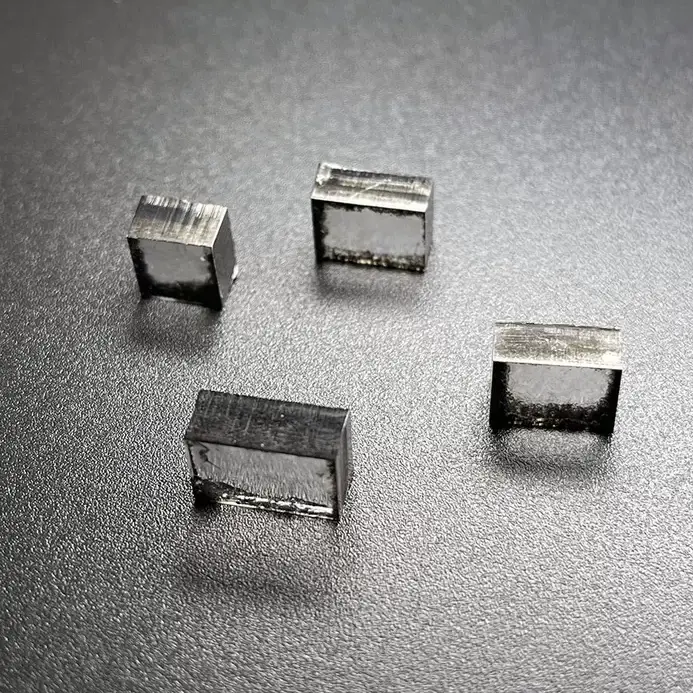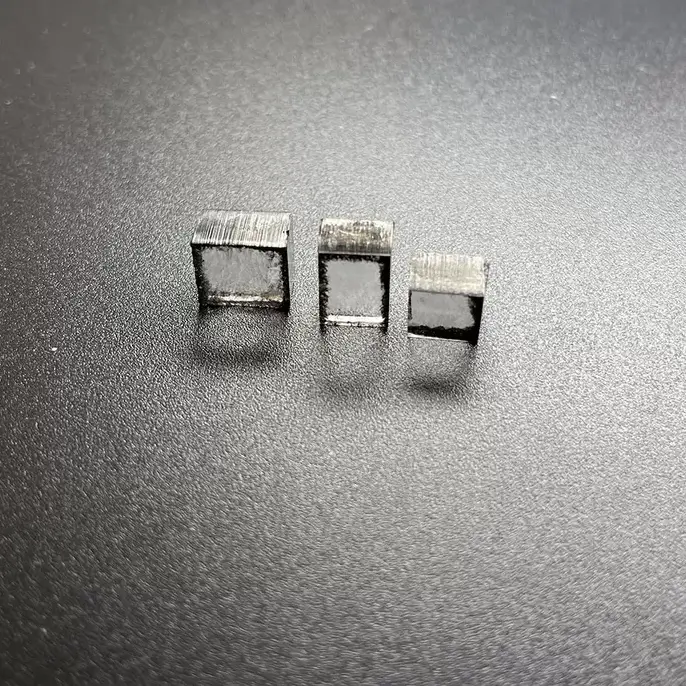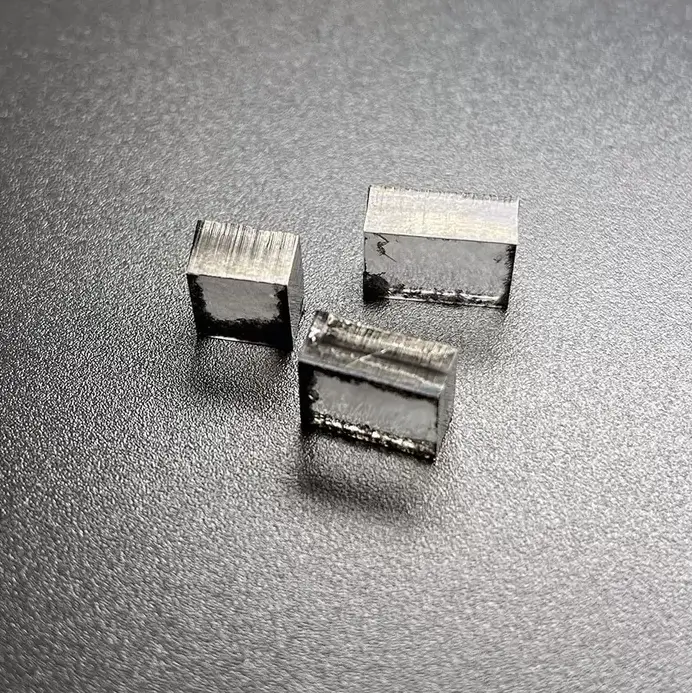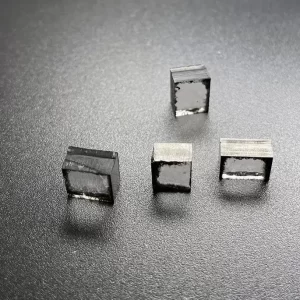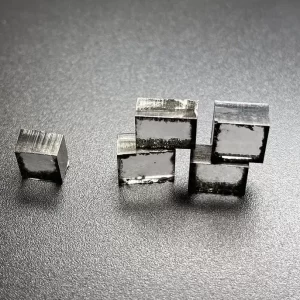VS Plus 7.0 Carat 8.0 Carat CVD Rough Diamonds Raw Unpolished Diamond For 2ct Ring
Rectangular Shape VS Plus 7.0 – 8.0 Carat Per Pcs CVD Rough Diamonds For 2ct Cvd Diamond Ring Making
CVD Rough Diamonds Description
Lab grown diamonds can be made by HPHT(High Pressure and High Temperature) and CVD(Chemical Vapor Deposition) methods. The apperance of HTHP and CVD rough diamonds are different. CVD rough diamonds usually are flat plates.
The lab grown diamonds is divided into different levels and different uses. Industrial grade diamonds are widely used. However, the production difficulty of gem quality diamonds is very different from that of industrial grade diamonds.
In the past, gem quality lab grown diamonds contain many impurities, and they could even be adsorbed by iron absorption stone. It’s very difficult for you to distinguish the gem quality lab created diamonds by using the iron absorption stone because of the improvement of the technology. With professional equipment, the comparison of the color, crystal shape and crystal surface characteristics, internal inclusion characteristics, absorption spectrum and ultraviolet fluorescence characteristics of the tested diamonds can “completely distinguish the artificially cultivated diamonds from the natural diamonds”. After all, natural diamond crystals were formed billions of years ago, while artificially cultivated diamonds can only be formed in a few days.
CVD Rough Diamonds – Raw Unpolished Diamond For 2ct Ring
There are many advantages of buying an uncut diamond, especially if you plan to keep the ring uncut forever. Not only are uncut diamonds cheaper, but they’re also more natural and thus, less likely to have internal inclusions. Regardless of the type of cut, a raw diamond can often have many internal flaws, which can significantly diminish the quality of a polished gem.
Uncut diamonds are a great alternative to clear, colorless diamonds
A significant advantage of CVD rough diamonds is their less expensive price tag. This type of diamond is as real as a mined one, but does not come from conflict zones. A CVD diamond is also conflict-free, as it is grown in a controlled laboratory environment. Because it is considered a Type IIA diamond, it is the most environmentally-friendly type of diamond.
Although HPHT and CVD diamonds have the same appearance, they contain boron impurities. The blue hue is caused by boron impurities. These are visible in HD images or videos. The CVD method was developed in the 1980s, and resembles the process of diamond formation in interstellar gas clouds. It uses less pressure and smaller machines than the HPHT method.
A great advantage of CVD rough diamonds is that they have perfect symmetry, which makes them a great alternative to clear, colorless gems. They are also ideal for engagement rings and wedding rings. These stones are often higher in clarity than their mined counterparts. The clarity grades of these stones are comparable to those of natural diamonds, and most consumers will not notice any difference.
While the quality of CVD diamonds can be questionable, they are still a wonderful alternative to clear, colorless diamonds. The main benefit of this type of diamond is its cost-effectiveness and near-perfect appearance. In addition, they are far more attractive than other diamond varieties. They are ethically sourced and widely available, and a great alternative to clear, colorless diamonds.
The CVD process has an inherent brown hue, which can be minimized by moving up a color grade. A brown H diamond, for example, has a faint brown hue due to anomalous birefringence. As this type of diamond is grown layer by layer, it contains many tiny voids, or “vacancies.” A vacancy, as it is also known, is an energy-efficient atomic structure that can reduce a diamond’s weight and improve its clarity.
The price of lab-grown diamonds is much lower than the cost of natural diamonds. Often, a lab-grown diamond is about 2x cheaper than its natural counterpart. GIA recently began assigning a single clarity and color grade to lab-grown diamonds. Because of their lower prices, CVD diamonds are cleaner and more transparent than their natural counterparts. Moreover, they are a great option for diamond lovers looking for a cheaper alternative to clear, colorless diamonds.
They are cheaper than cut diamonds
Currently, there is much confusion surrounding whether cut or CVD rough diamonds are better, and the answer depends on your personal preference. Cut diamonds are more expensive, as they require more labor and human resources, while CVD diamonds are much cheaper. The difference between natural and lab-grown diamonds lies in the process of creation, and many consumers prefer lab-grown diamonds. Here are some of the benefits of lab-grown diamonds.
First, they are much cheaper than mined diamonds. Compared to cut diamonds, CVD diamonds cost 30 to 50% less. The added benefit is that CVD diamonds are conflict-free, meaning that you will know where the diamond was mined. By contrast, mined diamonds are most likely sourced from areas where conflict is prevalent. Because of this, buying a diamond cut by a lab-grown company is a great way to help break the cycle of cruelty.
Another advantage of using CVD diamonds is their lack of expensive materials. Since they are produced in labs, they are cheaper and better than natural diamonds. But this advantage is also a disadvantage: they are subject to discoloration and wear, which makes them a less desirable choice. CVD diamonds have the same chemical properties as natural diamonds, but they have much lower prices. Moreover, they last longer than cut diamonds, so they are often the best option if you want to make an investment.
The shape of the rough diamond can also impact its cost. A large rough diamond may need to be cut into smaller polished diamonds, while a small asymmetrical rough is cheaper. Faceting is a labor-intensive process, and faceters expect to be paid a certain amount for their work. Thus, uncut diamonds are often cheaper than cut diamonds. The difference in prices is in the value of the polished diamond.
Another important advantage of lab-grown diamonds is that their prices are not correlated with carat size, which makes them ideal for statement jewelry. Even better, these diamonds can be colored if you so desire, and the cost is significantly less than natural fancy colored diamonds. If you can afford the color, lab-grown diamonds are the way to go. They cost a fraction of the cost of cut diamonds, so you can afford to buy them before your wedding or honeymoon.
They are a great alternative to industrial diamonds
Natural earth-mined diamonds require mining and processing for their production. This requires the use of heavy machinery, fuel, and labor to gather these stones. In addition, they damage the earth’s ecological balance. CVD Rough Diamonds are an environmentally friendly alternative to industrial diamonds. This process also saves a significant amount of energy. Furthermore, CVD diamonds are far less expensive than natural diamonds.
The CVD process produces diamonds using a high-grade seed and high-quality carbon content. This gives CVD diamonds a higher degree of control over molecular structure. CVD diamonds are also capable of obtaining advanced applications than HPHT diamonds. For example, CVD diamonds can be doped with boron for electrochemical applications. They can also be doped with nitrogen-vacancy for quantum technologies.
Unlike industrial diamonds, CVD Rough Diamonds do not come from war zones. Many companies, however, are attempting to increase safety measures as these diamonds are made with chemical vapors and deposition. Although the production processes are comparatively safe, some companies are actively working to improve safety measures. The FTC warns against claims of “sustainable” diamonds. In reality, though, CVD Rough Diamonds share the same chemical and physical properties as natural diamonds.
When it comes to the production of synthetic diamonds, there are many pros and cons of each method. However, diamonds are best when they are sourced from a natural source, because the production process is less damaging to the earth’s ecosystem than other materials. CVD Rough Diamonds are the best alternative to industrial diamonds due to their superior optical properties, durability, and low cost.
In a recent study, a company known as Gemesis Corporation has developed a synthetic diamond using a process known as HPHT. In March 2012, they began marketing their synthetic diamonds to the public. Since then, several other companies have entered the field. In March 2015, GIA researchers bought 16 CVD diamonds from Gemesis for evaluation. The diamonds ranged in weight from 0.24 carats to 0.86 carats, and were found to have high colors.
They are difficult to pick right
The first question to ask yourself is if you want a rough diamond for your 2ct ring or a polished diamond. There are many options to choose from. While choosing a rough diamond, make sure to look at the shape and color of the stone. The diamond’s shape will affect the price. A large rough might have to be cut into a small, polished diamond. A smaller, symmetrical rough will be less valuable and will be cheaper. This means that uncut diamonds can be difficult to pick for a 2ct ring.
When choosing a rough diamond, be sure to look for a diamond that has gem-grade potential. The gem grade indicates that the stone will cut well. It must be free of internal fractures, have very few inclusions, and be a good size. When cut, a rough diamond is half the size of the diamond it was in its uncut form, so a 5-carat rough diamond would be a 2.5-carat stone.
Choosing a diamond with the correct color is essential for a gorgeous, sparkly ring. While many diamonds have a natural blue tinge, it can be difficult to find the exact color you want. You can look at HD images and videos to see the diamond’s true color. The CVD method was developed in the 1980s to mimic the formation of diamonds in interstellar gas clouds. It requires less energy and smaller machines. However, it does not offer as much transparency as a natural diamond.
VS Plus 7.0 Carat 8.0 Carat CVD Rough Diamonds Raw Unpolished Diamond For 2ct Ring
